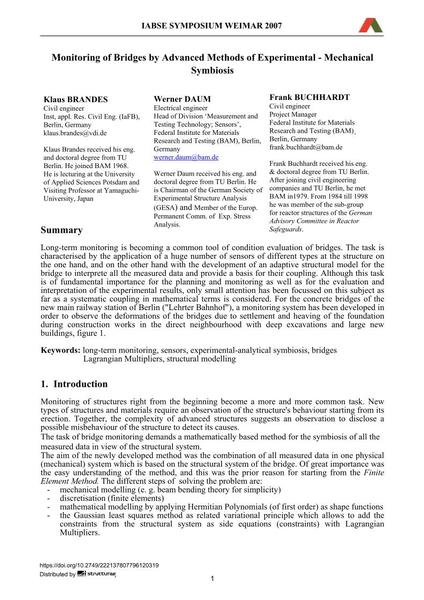Monitoring of bridges by advanced methods of experimental-mechanical symbiosis

|
|
|||||||||||
Bibliographic Details
| Author(s): |
Klaus Brandes
Werner Daum Frank Buchhardt |
||||
|---|---|---|---|---|---|
| Medium: | conference paper | ||||
| Language(s): | English | ||||
| Conference: | IABSE Symposium: Improving Infrastructure Worldwide, Weimar, Germany, 19-21 September 2007 | ||||
| Published in: | IABSE Symposium Weimar 2007 | ||||
|
|||||
| Page(s): | 208-209 | ||||
| Total no. of pages: | 8 | ||||
| Year: | 2007 | ||||
| DOI: | 10.2749/222137807796120319 | ||||
| Abstract: |
Long-term monitoring is becoming a common tool of condition evaluation of bridges. The task is characterised by the application of a huge number of sensors of different types at the structure on the one hand, and on the other hand with the development of an adaptive structural model for the bridge to interprete all the measured data and provide a basis for their coupling. Although this task is of fundamental importance for the planning and monitoring as well as for the evaluation and interpretation of the experimental results, only small attention has been focussed on this subject as far as a systematic coupling in mathematical terms is considered. For the concrete bridges of the new main railway station of Berlin ("Lehrter Bahnhof"), a monitoring system has been developed in order to observe the deformations of the bridges due to settlement and heaving of the foundation during construction works in the direct neighbourhood with deep excavations and large new buildings. |
||||
| Keywords: |
bridges sensors long-term monitoring experimental-analytical symbiosis Lagrangian Multipliers structural modelling
|
||||
